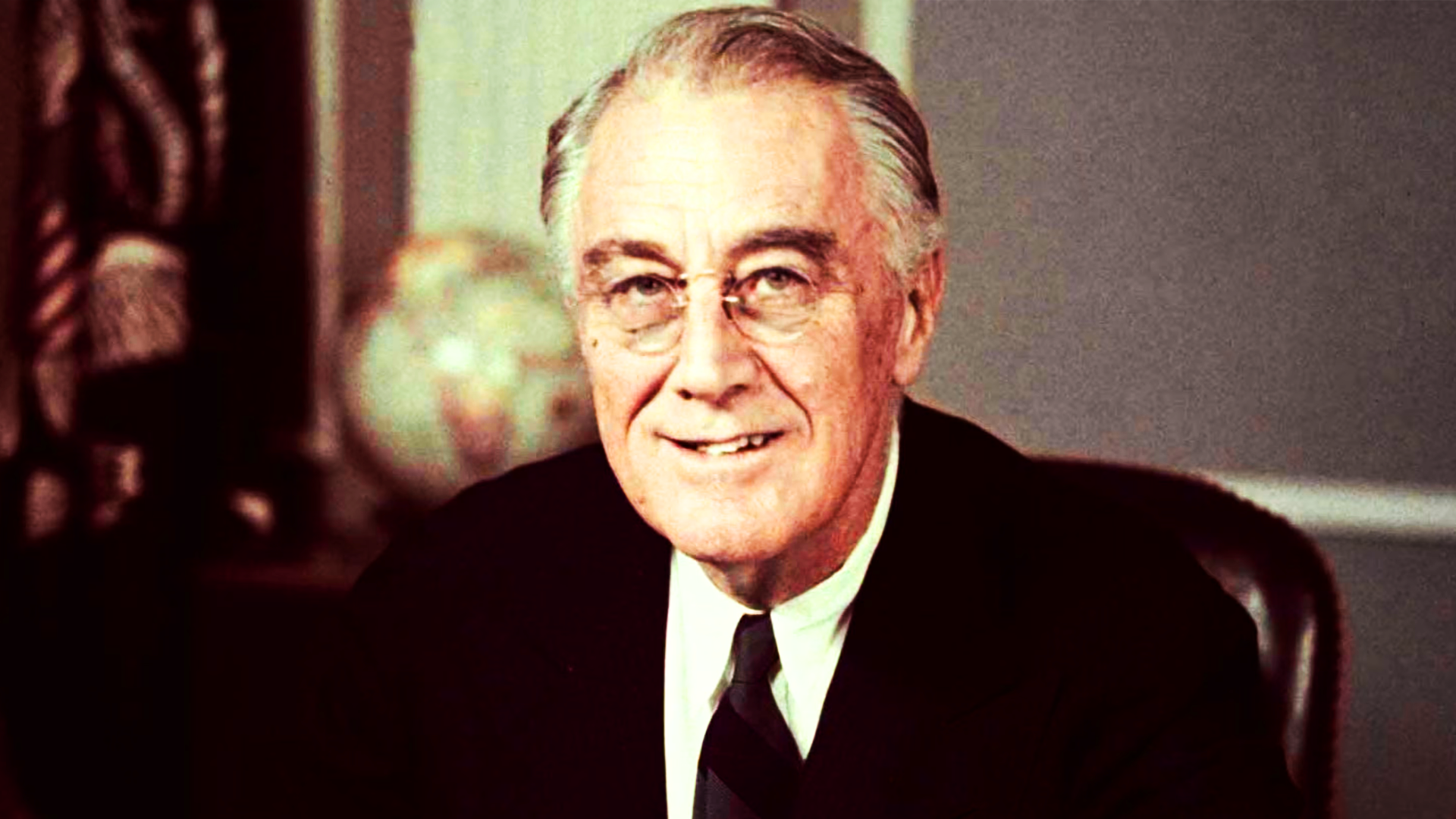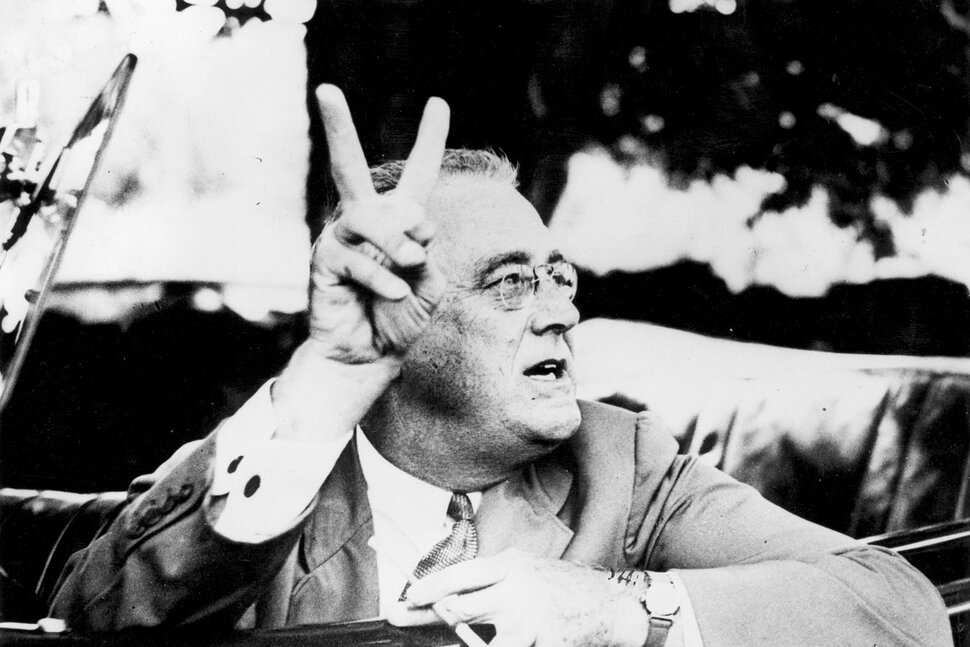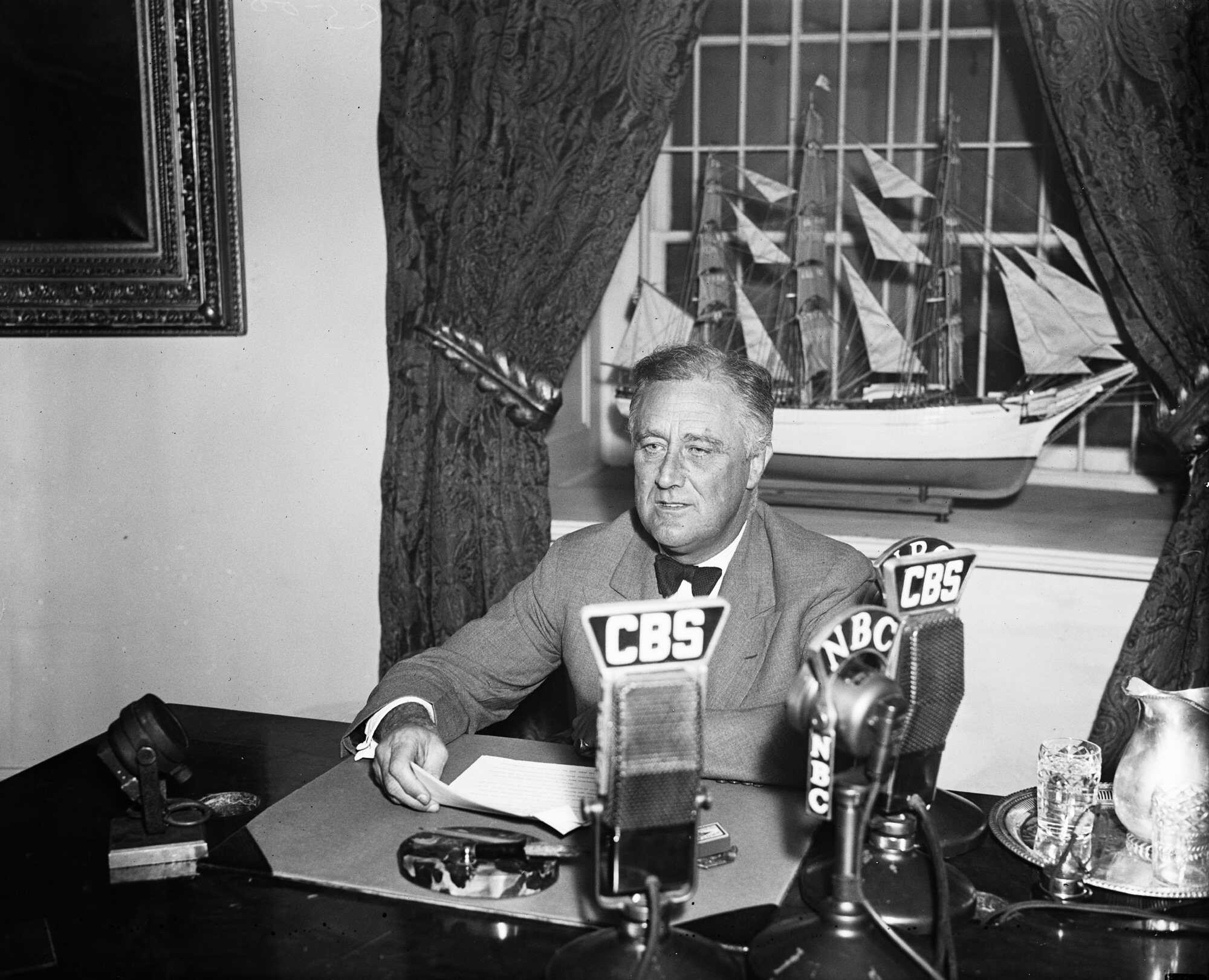Franklin Delano Roosevelt

Illustration of Franklin D. Roosevelt delivering a fireside chat with one hand on the radio and the other pointing to a globe.
Biography
Franklin Delano Roosevelt, FDR, was elected president in 1932 during the darkest years of the Great Depression. With banks collapsing, unemployment soaring, and public trust in the government at an all-time low, FDR stepped in with a bold plan: a 'New Deal for the American people.' Through a whirlwind of policies, programs, and speeches known as 'fireside chats,' he gave Americans something rare in hard times — hope.
The New Deal was a sweeping transformation. Roosevelt believed government shouldn’t stand on the sidelines while people suffered. His administration launched programs like the CCC (Civilian Conservation Corps), which put young men to work building trails and planting trees, and the WPA (Works Progress Administration), which paid artists, teachers, and laborers alike. He created Social Security to support the elderly and jobless, and passed laws protecting workers’ rights and regulating Wall Street.
When World War II erupted in Europe, FDR walked a tightrope, supporting allies like Britain without pulling the U.S. into combat. That changed after the 1941 attack on Pearl Harbor. Roosevelt rallied the country and transformed the U.S. into what he called the 'arsenal of democracy', mobilizing factories, workers, and soldiers for a global fight against fascism. He coordinated with Allied leaders, helped plan the D-Day invasion, and laid the groundwork for what would become the United Nations.
FDR served four terms, more than any other president, and redefined the role of government in American life. He expanded the power of the presidency, built a massive federal staff, and set a new expectation: that presidents would not only govern, but lead emotionally and morally through crisis. His leadership helped restore American confidence, but it wasn’t without flaws. He signed Executive Order 9066, leading to the unjust internment of Japanese Americans, a reminder that even great leaders can make grave mistakes.
When he died in 1945, just before World War II ended, FDR left behind a changed nation: one more willing to support the vulnerable, more involved in world affairs, and more aware that democracy must be defended both at home and abroad.
FDR reshaped the American presidency and redefined the role of government in people's lives. His leadership during two of the 20th century’s greatest crises showed how bold vision and real empathy can change the course of history.
?
How did the New Deal change the role of government in everyday life?
What lessons can we learn from how FDR used communication to lead during crisis?
In what ways did FDR expand or challenge the Constitution?
How can we balance government power with protecting individual rights?
Why is it important to study both the successes and failures of past leaders?
Dig Deeper
A brief overview of FDR’s life and legacy, from the Great Depression to WWII.
This Crash Course video breaks down the policies and impact of the New Deal.
Discover more

Eleanor Roosevelt
Eleanor Roosevelt transformed the role of First Lady into one of activism, journalism, diplomacy, and fearless advocacy.

Nelson Mandela
Nelson Mandela was a South African freedom fighter who spent 27 years in prison for resisting apartheid and became the country’s first Black president.

Jean-Jacques Rousseau
Jean-Jacques Rousseau reimagined modern freedom, education, and democracy through his social contract theory and philosophy of natural human goodness.
Further Reading
Stay curious!

